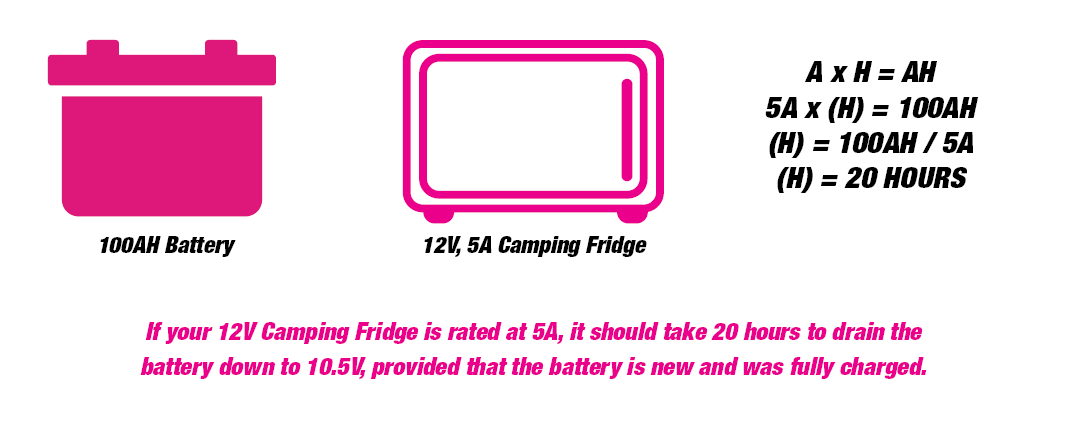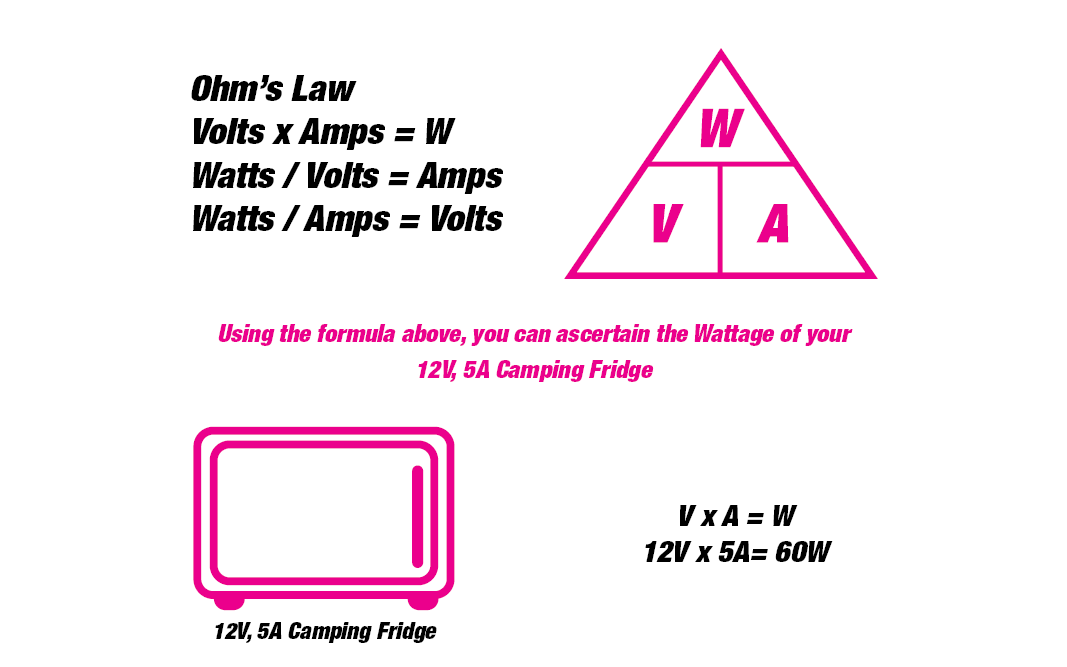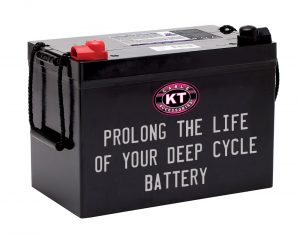All Deep Cycle batteries are rated in Amp Hours (AH). An ampere hour (abbreviated Ah, or sometimes amp hour) is the amount of energy charge in a battery that will allow one ampere of current to flow for one hour. An ampere is a unit of measure of the rate of electron flow or current in an electrical conductor.
For example, if you have an appliance that draws 20A and you use it for 20 minutes, then the amp hours used would be:
A x H = AH
20 x (20 mins / 60 Mins (1hr) = AH
20 x 0.333= 6.67AH
As you’ll note from the equation above, The faster a battery is drained (discharged), the less overall amperage is available. The battery’s AH rating decreases the faster you use it. This is This is called the Peukert Effect. The Peukert Effect is directly related to the internal resistance of the battery. If you discharge a battery over the course of 100 hours, the AH rating looks higher than if you discharge that same battery over the course of an hour. Because of the variances that could occur in AH ratings, an industry standard was implemented.
For deep cycle batteries, the 20 Hour Rate is the accepted AH rating time period for the majority of Deep Cycle Batteries. The 20 Hour Rate means that the battery is discharged down to 10.5V over a 20 Hour Period while the total actual AH that it supplies are measured. Sometimes ratings at the 6 Hour Rate and 100 Hour Rate are also given for comparison and for different applications. The 6 hour Rate is often used for industrial batteries, as that is a typical daily duty cycle. Sometimes the 100 Hour Rate is given just to make the battery look better than it really is, but it is also useful for figuring battery capacity for long-term backup.
For example, let’s take the below scenario into account.
If you do not have the Amp rating, you can use the Watt rating to determine the Amperage using Ohm’s law below.
Another Example:
Your Required Load is 500W
2.4 Hours is the theoretical run time before the battery is flat. The term theoretical is used because in practice, as the battery voltage decreases, the Amps drawn by the load increase proportionally. Due to this, total runtime will be slightly lower.
The type of load described above is higher than the rated 5A for the 100AH Battery and will shorten its life considerably. You should not use more than 5A load on a 100AH Battery as Deep Cycle Batteries don’t like being overloaded for long periods of time. To work out the total battery capacity required to run this equipment for twenty hours we need to establish how many AH we require.
Watts / Volts = Amps
500W / 12V = 41.67A
We’d like the appliances to run for 20 Hours.
A x H = AH
41.67A x 20 Hours = 833.40AH
8.33 AH = 8 x 100AH Batteries
By using the suggested 8, 100 AH Batteries you will be able to run your load of 500W for 20 Hours without damaging the batteries or considerably shortening the battery’s life. This is because each battery in your battery bank of 8 will supply only 5.21A, which is closer to the suggested load rating for a 100AH Battery.
- Always try to recharge your batteries as soon as possible after each use.
- Try to buy a ‘fresh’ battery initially. Buy batteries from outlets that frequently sell batteries and check the battery production dates.
- Do not let the battery sit unused/uncharged for long periods of time. Batteries discharge during storage time. This shortens their life. If possible disconnect any load from the battery while in storage and use intelligent charger for the top-up.
- Use a good quality intelligent charger with at least 2 charging stages. For example; Soft Start (Slow Charge), Bulk (Fast Charge), then trickle charge (maintain). Some of today’s 7 stage quality chargers offer proper battery maintenance and will largely increase your chances of prolonging your battery’s life cycle.
The above-mentioned chargers offer Battery Test & Desulphation processes which can bring a badly damaged battery back to life. Using such a charger takes complete care of your battery maintenance, ensuring long life, top performance and availability since you can also leave them connected to the battery forever without fear of overcharging it.
We Recommend KT 7 Stage Battery Chargers. Read about them here
Intelligent stuff!
For more information about calculating any of the information in the above blog post, don’t hesitate to contact a member of our friendly sales team on 1300 559 953. Alternatively, you can contact us via the form below.







